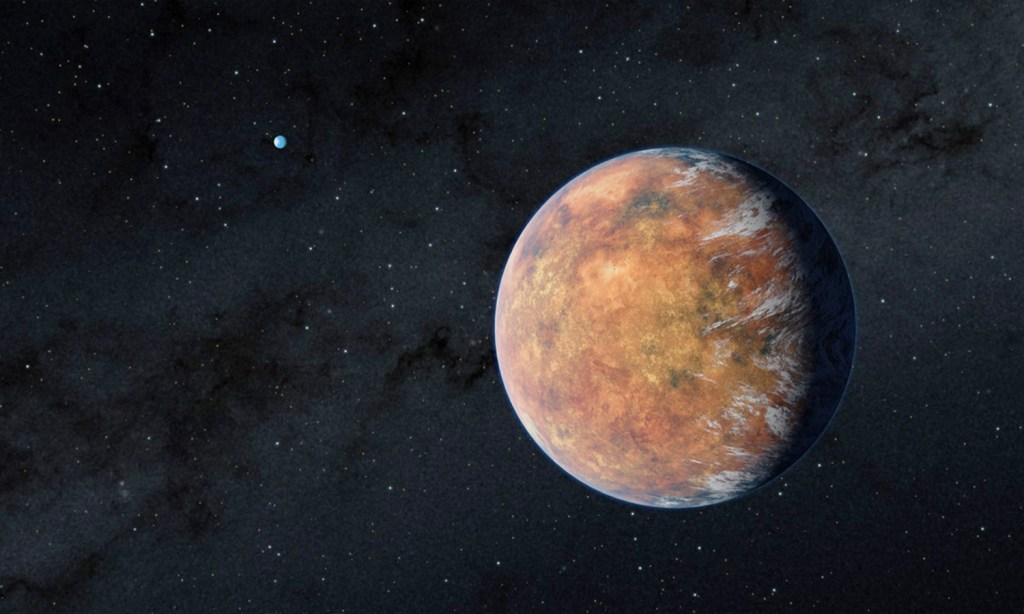NASA announced on Thursday, January 12 that they may have found a planet out there in space that could possibly support life.
Their Transiting Exoplanet Survey Satellite, or ‘TESS’, has identified a planet roughly the size of Earth which they’ve named TOI 700 e. The planet is orbiting within what is known as the ‘habitable zone’ of its star.
The habitable zone, also known as the ‘Goldilocks zone’, is the distance from a star that scientists estimate water could exist in a liquid state on the surface of a planet. Having liquid water is crucial, scientists believe, to the formation of an atmosphere and life itself.
NASA has said that this planet is 95% the size of Earth and it’s likely a rocky world.
TOI 700 e is just one of four planets in the star’s orbit, known as TOI 700. Two other planets in this solar system are likely too close to the star to have anything other than water in a gas state as their proximity to the star makes the surface too warm.
The third, TOI 700 d, exists further out than planet e, in the habitable zone, and could also contain life. The difference here is that planet d is in what is called the ‘conservative habitable zone’, meaning that even if we’re being cautious about where we think might be habitable, it would still fit. Planet e resides just in the ‘optimistic’ zone, meaning it’s possible liquid water and an atmosphere exists, but it’s less likely than in the conservative zone.
“This is one of only a few systems with multiple, small, habitable-zone planets that we know of,” said NASA’s Emily Gilbert, who led the work.
“That makes the TOI 700 system an exciting prospect for additional follow-up. Planet e is about 10% smaller than planet d, so the system also shows how additional TESS observations help us find smaller and smaller worlds.”
TOI 700 is a small, cool red dwarf star around 100 light-years away in the constellation of Dorado. That makes it roughly 946 trillion KMs from Earth or “close” in space terms. If planet e has an atmosphere, it would be much warmer than that of its further out planet d, whose average temperature is estimated to be about -4.3° Celsius. For context, the average temp of Earth is 13.9° Celsius.
NASA find these planets by aiming its telescope at stars and measuring the ‘wobble’ of light coming from them. The shadow of a passing planet causes that wobble and, from it, scientists can work out its size and composition.
NASA’s TESS has imaged around 75% of the observable sky and found 66 distant planets. When they discovered TOI 700 d, in 2020, it was the first time a planet had been found that could possibly sustain life. The discovery of its sibling planet makes this the first solar system with multiple potentially habitable planets.
In total, scientists have found more than 5,000 planets in the sky, with at least 10,000 more potential candidates. Assistant Professor Joey Rodriguez, one of the senior researchers on the project who discovered this new planet, has said that the next step will be trying to work out how to detect biological signatures that can tell us if life does indeed exist on a planet.
However, he has also said that we could end up finding life in places and shapes that we weren’t expecting to.
“Even if we do find something, we are trying to force our understanding of life into a box. What I mean by that is we have one data point for how we think about life and that’s Earth: It’s us and what we see around us. Who’s to say that’s what all life looks like?
Related: NASA Wants Scientists to Prepare for the Discovery of Alien Life
Related: NASA Just Achieved Actual Teleportation, So Bear With Me as I Attempt to Explain It
Read more stories from The Latch and subscribe to our email newsletter.







